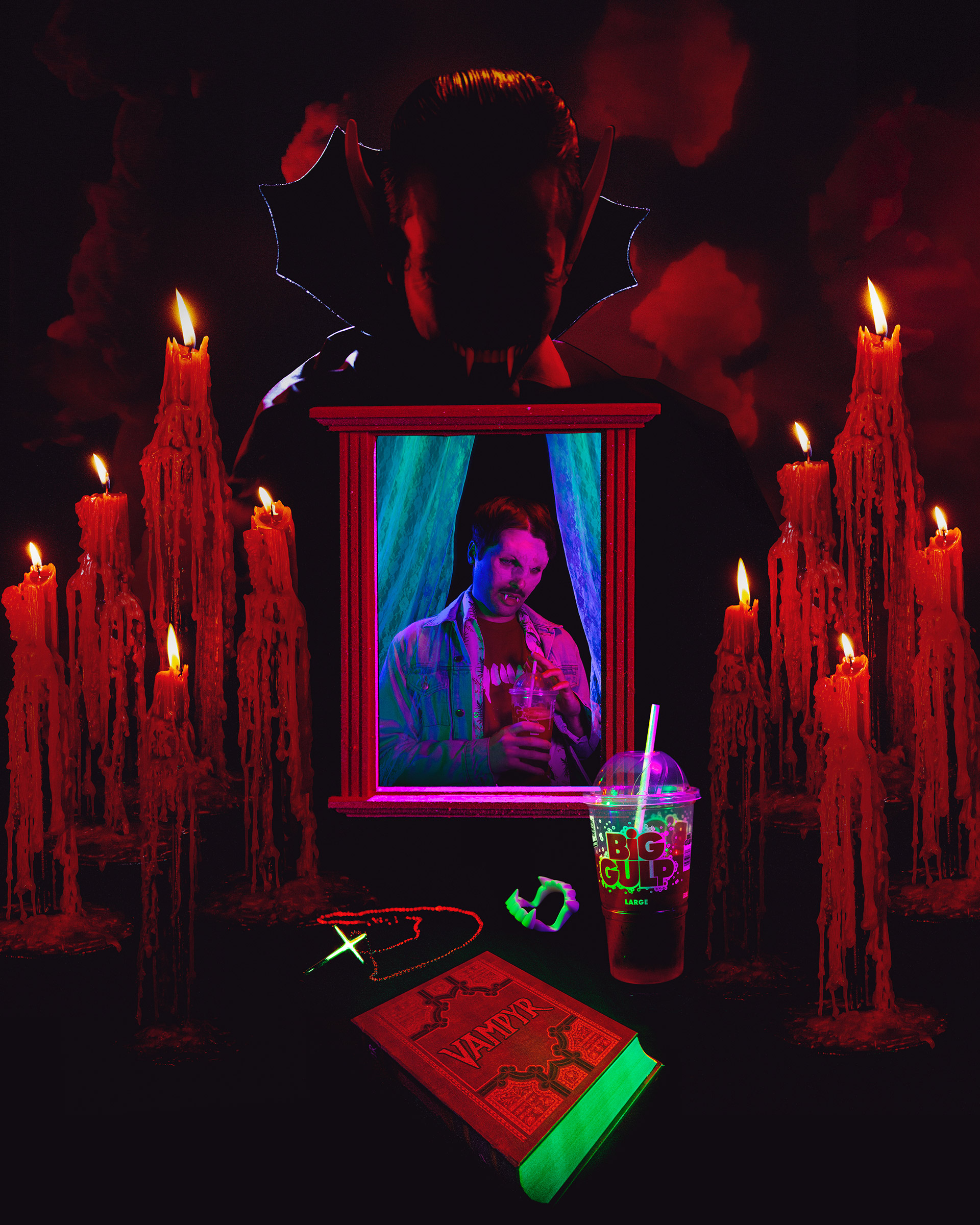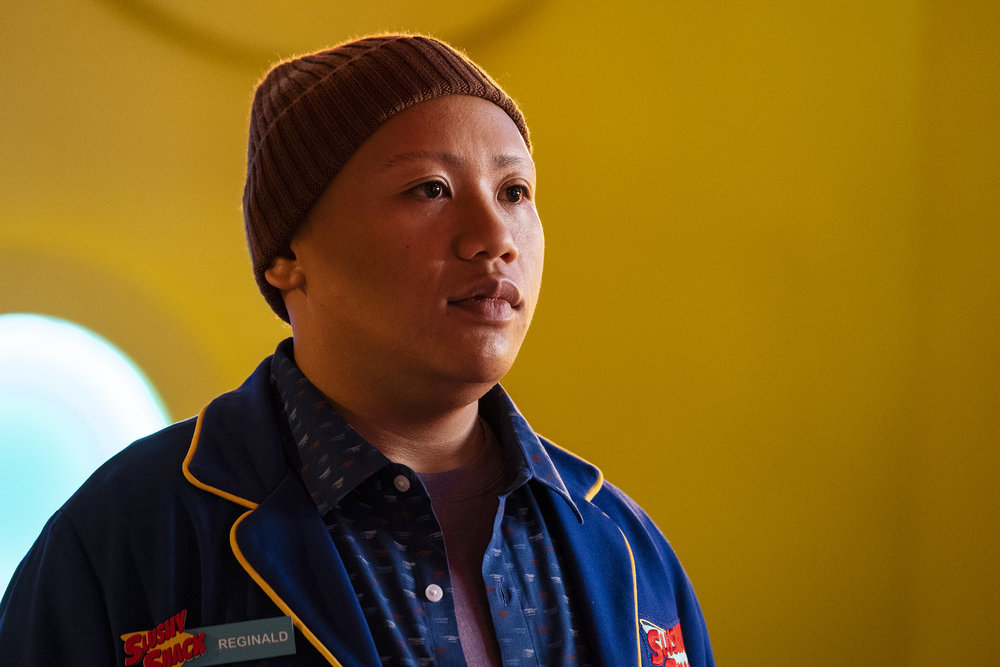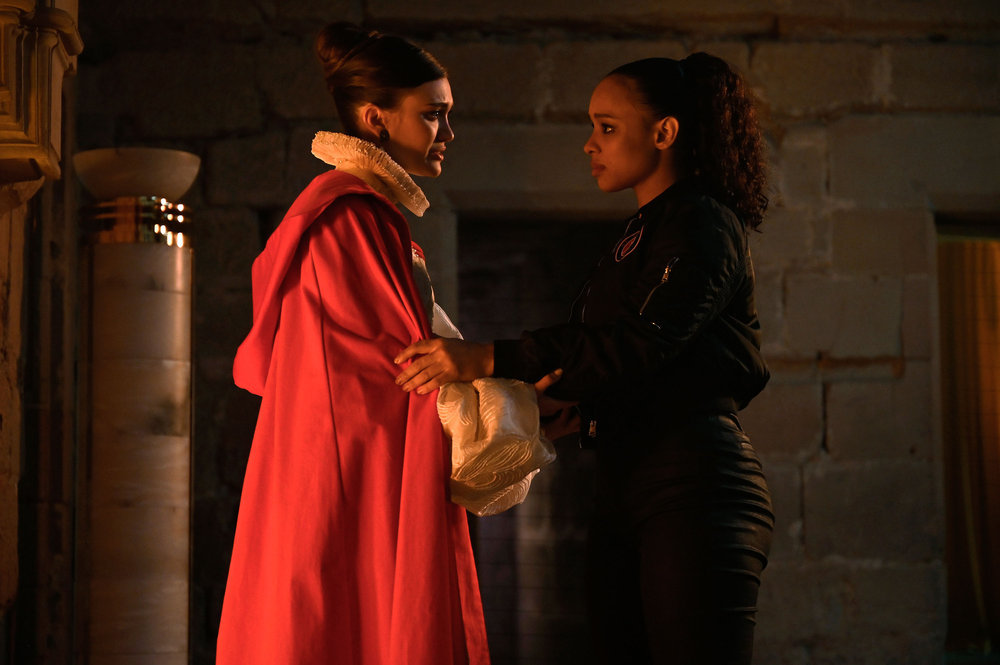
Reginald Andres is not like other vampires. Sure, he has a pair of retractable fangs, subsists on blood, and sizzles in the sun. Yet the hero of Syfy horror comedy Reginald the Vampire, played by Jacob Batalon, is also timid and geeky and self-conscious about his round belly. It doesn’t help that the vampire community is more superficial than a nest of high school mean girls.
Listen, not every bloodsucker is a supermodel—just ask cinema’s ur-vampire Nosferatu. But if the past century of film and TV are any indication, then they’ve yet to receive the body-positivity memo. Adapted from Johnny B. Truant’s comic Fat Vampire, the silly but sweet Reginald plays with the trope of the svelte, impossibly attractive vampire. Instead of sinking his teeth into swooning humans, Reginald nurses a crush on a co-worker. Instead of lying around some mansion decorated in velvet and brocade, he slings slushies at a fast-food joint.
Roughly a decade after the last, Twilight-driven wave of vampire media subsided, Dracula’s children are once again becoming pop culture’s monster of choice. And this time, they’re more than just objects of inchoate lust. While the fang-enhanced characters that populate new movies like Morbius, books like Claire Kohda’s Woman, Eating, and a particular glut of TV shows, from What We Do in the Shadows to Anne Rice’s Interview with the Vampire, are not all nebbishes like Reginald, they do seem more human than ever. Neither dastardly nor debonair, these undead creatures hang out with roommates, squabble with parents, suffer from chronic illnesses, and even experience discrimination based on differences they can’t control. Vampires—they’re just like us! (Except, of course, that we’re still their prey.)

Vampires have always stood in for outsiders deemed exotic and dangerous, hiding in plain sight. Emerging into a fearful, fragmented society, however, at a time when binaries like insider-outsider, oppressor-oppressed, and us-them have never felt more subjective, these new vampire narratives blur the line separating mortal souls from allegedly soulless immortals. Not only is monstrousness in the eye of the beholder, but those of us who have reflections might be just as likely to find it in the mirror as we are to catch it tapping on our window.
It’s no coincidence that the quintessential vampire story, Bram Stoker’s 1897 novel Dracula, begins with an Englishman’s journey east to Transylvania in order to help a local nobleman, one Count Dracula, relocate to the UK. Embedded in their dynamic is the terror of concealed difference that is the psychological hallmark of vampire lore—in this case, the idea that a wealthy, influential foreigner might look like “one of us” but mean “us” harm.
The fact that vampire lore dates back to antiquity, when it surfaced in several discrete, Eastern and Western cultures—and, as recently a few centuries ago, fueled outbreaks of mass hysteria on both sides of the Atlantic—underscores how entrenched most civilizations’ fear of the other has always been. In the 20th century West, where “one of us” meant white, straight, and Christian, vampires could stand in for light-skinned immigrants, Jews, queer people, political dissidents, and any other supposed outsider who could conceivably blend into a crowd.

As countercultures exploded and progressive movements brought marginalized voices to the forefront, the allegories shifted. In the 1960s and ’70s, vampires often represented the simultaneous thrills and perils of free love. Around the turn of the millennium, our culture-wide infatuation with the unknown yielded a flood of human-vampire romance franchises: Buffy the Vampire Slayer, Twilight, The Vampire Diaries, The Southern Vampire Mysteries book series and its HBO adaptation, True Blood. Before it devolved into a mess of heaving bosoms and mixed metaphors, True Blood drew parallels between vampires “mainstreaming,” or living openly alongside humans, thanks to the invention of synthetic blood, and queer people integrating into straight society—complete with radicals who’d rather get staked than conform.
Yet even as mortal heroines embraced their bloodsucker paramours, storytellers held them at arm’s length. The protagonists they created were almost always human, and brooding vamps like Twilight’s Edward Cullen and Buffy’s Angel maintained an unknowable mystique.
The new generation of vampires is anything but cryptic. Just as Reginald vents anxieties to his maker (Mandela Van Peebles), the Staten Island roommates in FX’s hilarious Shadows—a vanguard of the vampire comeback, after four seasons—eagerly unload petty grievances on a documentary crew. Netflix’s First Kill, which debuted in June and was quickly canceled, to the outrage of fans, is narrated in part by teenage Juliette (Sarah Catherine Hook), whose immortal family won’t stop pressuring her to complete a daunting rite of passage: slaughtering her first victim. This unique problem activates universal adolescent angst. “Even on good days, I still feel like I don’t fit in,” Juliette laments. “Like everyone has it all figured out—the clothes they wear, the bands they like, who they are, who they wanna be. And I’m the only one stuck pretending.”

These days, the typical coming-of-age vampire story is less a human’s fantasy of first love than it is a monster’s own bildungsroman. Peacock’s teen drama Vampire Academy, an adaptation of the Twilight-era YA books by Richelle Mead, takes place at a prep school for vampires, where students chafe against class divisions and struggle to live up to family legacies. Showtime’s disappointing Let the Right One In, premiering Oct. 7, twists the Swedish novel turned big-screen horror masterpiece into a gritty, New York crime drama. Among the only elements the show shares with the movie is a friendship between a vampire trapped in an eternally preadolescent body, Eleanor (Madison Taylor Baez), and her next-door neighbor, Isaiah (Ian Foreman), a gentle, bullied middle schooler. Eleanor’s predicament echoes that of Claudia in the new AMC drama Anne Rice’s Interview With the Vampire. Made immortal at 14, Claudia matures mentally but not physically—which sets her up for a long lifetime of choosing between loneliness and partners perversely attracted to her unnaturally childish appearance.
Framed as a more honest follow-up to vampire Louis de Pointe du Lac’s (Jacob Anderson) confession to a naive young reporter in Rice’s novel and the 1994 film, this Interview casts Eric Bogosian as the same journalist half a century later. Rather than reverting to innuendo, the show makes plain—and explicit—the sexual relationship between Louis and his male maker, Lestat (Sam Reid). Because Louis is also Black, in 1910s New Orleans, becoming immortal makes him a triply misunderstood outsider. He’s not the only queer vampire pouring their heart out, so to speak, to a human audience this year. When First Kill’s Juliette develops a crush on a classmate (Imani Lewis) she doesn’t know is a slayer, the attraction could turn fatal for either girl. The bookish first-person narrator of Isaac Fellman’s 2022 novel Dead Collections is Sol, a transgender man who works as an archivist. “I didn’t see myself as being in the closet about my illness, my vampirism,” he recalls, “but I’d only ever told my boss and HR.”

Sol is one of many recent characters, from Right One’s Eleanor to Morbius’ eponymous Marvel antihero, whose thirst for blood is tied to a humanizing medical condition rather than an evil nature. More unusual is Sol’s resemblance to Fellman, who is also a trans man and an archivist; to at least some extent, Collections is a work of vampire autofiction. It makes sense that LGBTQ creators are reclaiming an archetype—monster—that has so often been deployed against them as a slur. As author Carmen Maria Machado notes in Shudder docuseries Queer for Fear, “If you’ve been on the other side of the pitchfork, you’re maybe a little sympathetic to the monster.”
It also makes sense that outsider perspectives are supplanting those of the in-group, even within a niche as fantastical as vampire fiction, in a country where racial minorities will soon be the majority and the number of Americans who identify as queer or trans is steadily rising. The arts have trended towards diversity—or at least towards an expanded understanding that diverse representation might be desirable—since Buffy, which was celebrated in its time as a paragon of pop feminism, hired an all-white cast of vamps and slayers. Meanwhile, subversive movies like Raw and particularly Get Out have ushered in an age of socially progressive horror.
But there’s more to the relatable-vampire phenomenon than a convergence of demographic and industry trends. On an emotional level, it resonates within a culture that turns disagreement into demonization. In the post-Trump era, the sweetest-looking Middle American mom might be an insurrectionist. Whether it’s a neighbor, a cab driver, or that cousin you had to unfriend on Facebook, any normal-seeming acquaintance is liable to start spewing venom that burns you to your core. It’s a bit like watching fangs suddenly descend from a friendly smile.

Of course, to the insurrectionists, the rest of us (or our nonexistent globalist puppet masters, I guess), even those who don’t fit into any traditional outsider category, are the monsters. Polarized reactions to the pandemic have furthered the horror metaphor; what’s scarier than an unmasked, unvaccinated visitor coughing SARS-CoV-2 all over a nursing home? As critic Jason Zinoman pointed out last year, before they became rakish lovers, vampires appeared in medieval folklore as “symbols of epidemics.” More terrifying, at least psychologically, is the way COVID forced every compassionate person to question whether we, too, might be asymptomatic monsters flying under the radar. We could take every precaution and still get infected—or even unwittingly pass the virus to someone who’d eventually die of it.
Such mistrust of one’s own instincts and intentions is a hallmark of the new, introspective vampire. The narrator of Woman, Eating, Lydia, is a 23-year-old, Asian and white vampire who is living on her own for the first time and literally struggling to put food on her table. She doesn’t feed on humans because, as she puts it, “I want to be a good person”; before she moved out, her mother sourced contraband pigs’ blood from a butcher. Mistreated at an internship where she could conceivably devour her supervisors and vanish into the night, Lydia sees herself not as a coherent being but as a body where human and demon uneasily cohabit.
Bloodthirst aside, this is a pretty effective encapsulation of what it means to be a person with free will. Unless we behave so atrociously as to destroy any chance of redemption, each of us is the site of a war between good and evil that will rage on for as long as we live—and that might remain unresolved by any legacy we leave. I mean, how bloody relatable is that?
More Must-Reads From TIME
- The 100 Most Influential People of 2024
- Coco Gauff Is Playing for Herself Now
- Scenes From Pro-Palestinian Encampments Across U.S. Universities
- 6 Compliments That Land Every Time
- If You're Dating Right Now , You're Brave: Column
- The AI That Could Heal a Divided Internet
- Fallout Is a Brilliant Model for the Future of Video Game Adaptations
- Want Weekly Recs on What to Watch, Read, and More? Sign Up for Worth Your Time
Contact us at letters@time.com